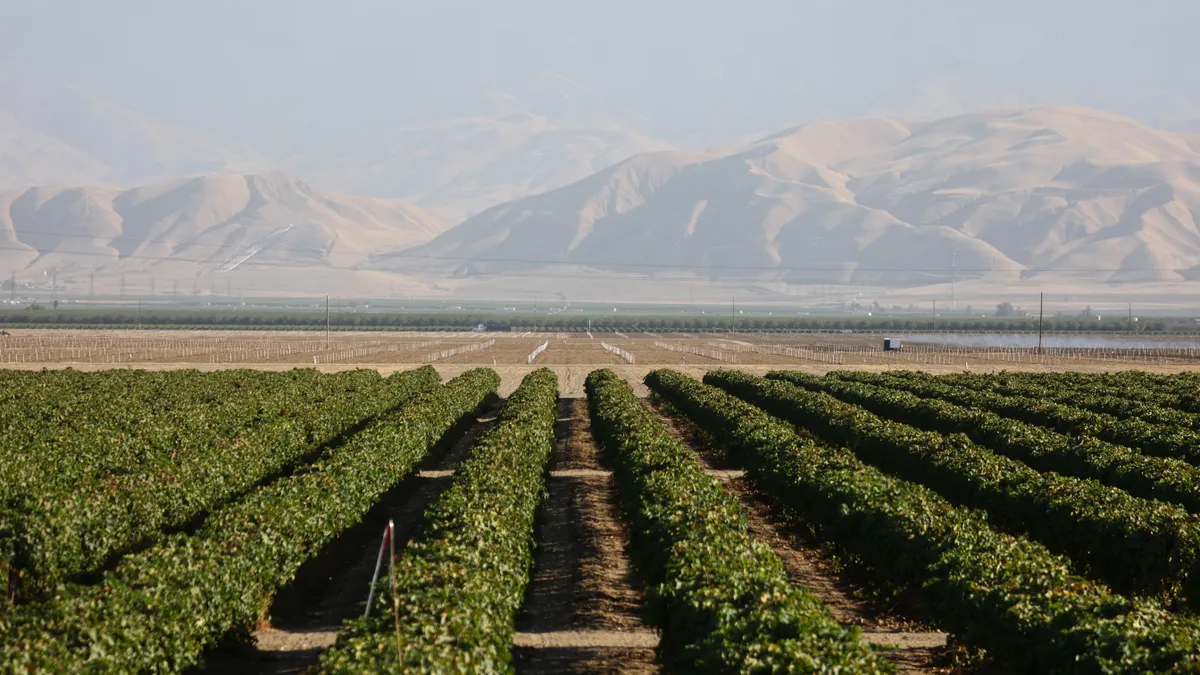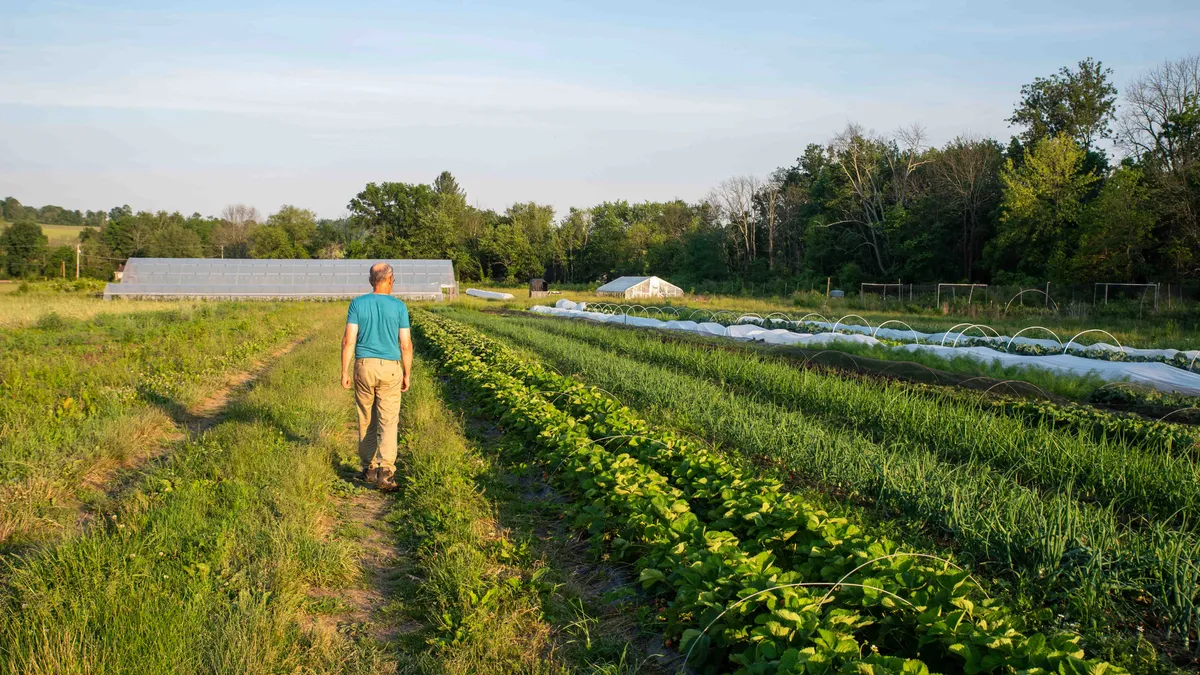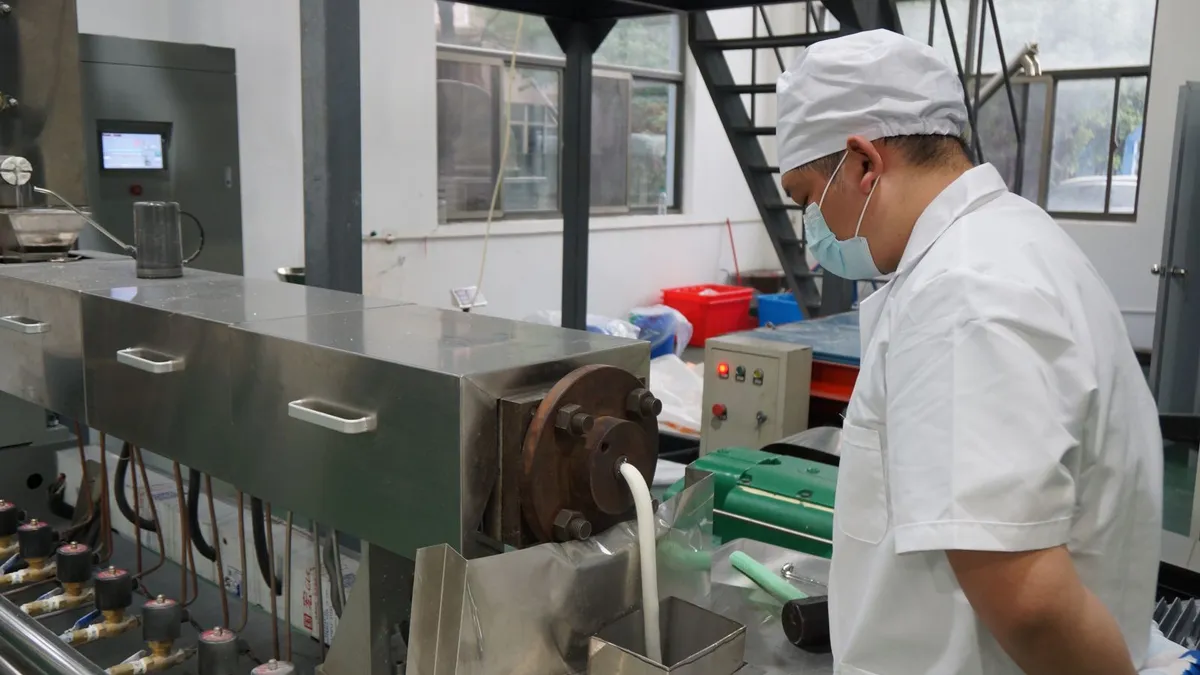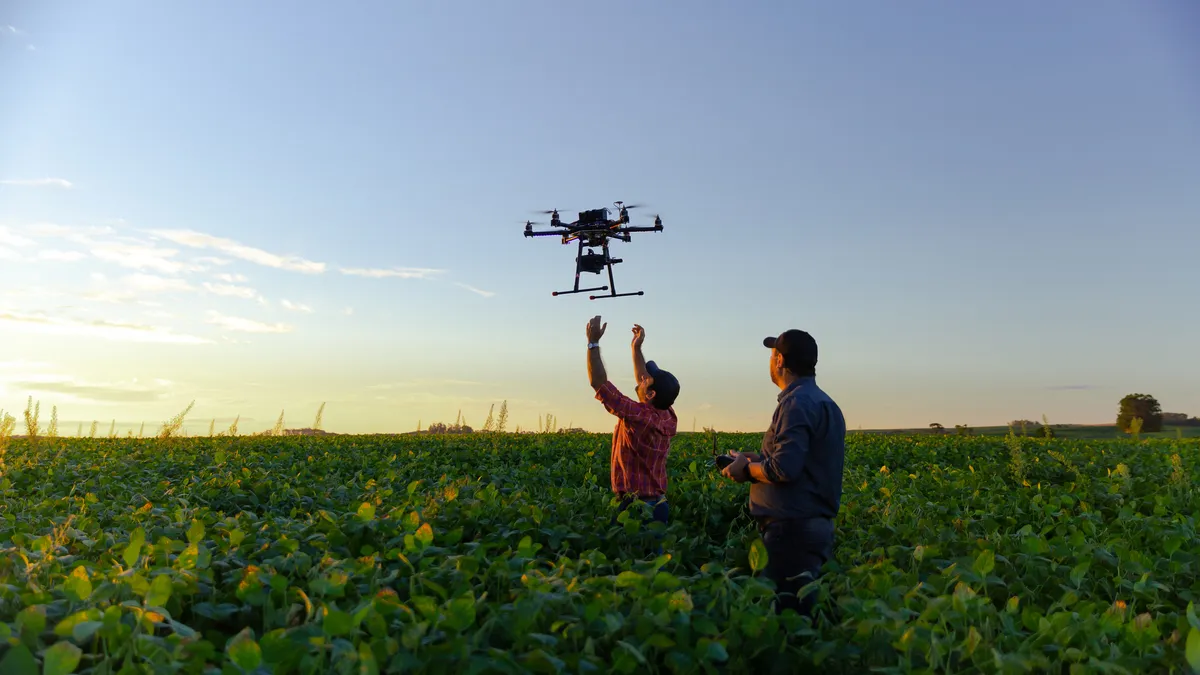Climate change is making agriculture more challenging and less predictable all over the U.S. But the farm-rich Southwest may face the most imminent threat, as extreme heat, a 20-year drought, and shifting weather patterns make growing crops increasingly difficult.
The problem has intensified since 2020, when extreme drought conditions due to low precipitation and extreme temperatures left farmers throughout the region with little water to irrigate their fields, or sometimes none at all. To adapt to a more volatile, more extreme climate in these desert regions, farmers will have to change not only what they grow but also how they grow it.
“Farmers are realizing, ‘I'm seeing this on the ground — water shortages, heat waves, wildfire — and I need to do something about it to be able to survive this change,’” said Jill Moe, director of the Desert Farming Initiative at the University of Nevada-Reno. “If we don't make these changes in the next 10 years, we're going to be in big trouble.”
Hotter weather, less water
Decades of overuse have tapped out the Colorado River’s supply, which is now exceeded by demand for water to the tune of about 1.6 million acre-feet each year.
The same problems that affect the Colorado’s supply — lower rates of precipitation, higher rates of evapotranspiration of mountain snowpack, and overuse — also threaten other rivers, lakes, reservoirs, and groundwater supplies around the region. A historic 20-year drought has intensified the problem, and since 2020, drought and heat throughout the Southwest have become even more acute.
“What we're dealing with here in terms of climate change, the changing dynamics with our water supply, increasing population, higher demand, and limited resources, is not just a problem for us here. It's really a global issue,” said Jeff Silvertooth, professor and extension specialist at the University of Arizona’s School of Plant Sciences. “There’s a lot of tension associated with it, and some critical times for us to work through.”
For thousands of years, the Southwest's year-round warm weather has offered ideal conditions for farming. Maize was cultivated by Native peoples in what’s now Arizona and New Mexico as early as 2100 BCE. Those civilizations developed systems of irrigation canals to grow crops that acclimated to the hot, arid conditions over generations.
After colonization, the Spanish and then Americans established farms, adapting growing methods for crops like wheat and hay to their new environment. It wasn’t until the 20th century that areas like the Salinas Valley and Imperial Valley in California and the Yuma area in Arizona became centers of intensive production, growing fruits, nuts and vegetables for the rest of the U.S. and for export. Alfalfa hay, one of the biggest crops in states like Nevada, goes to feed livestock raised for dairy and beef. Fields were irrigated by then-abundant groundwater as well as the flow of the Colorado River, which passes through seven states in the region.
Farming in the arid Southwest has been a massive economic driver, with the region’s crops valued at $34.5 billion in 2012 — with nearly 90% of that figure supplied by California — and hundreds of thousands of jobs. Despite its economic importance and key role in food security, agriculture in the region competes with the land and water needs of 60 million people.
Who owns water and how it’s allocated is complex: rights are controlled by federal, state, and local governments.
Third-generation farmer Paco Ollerton has grown everything from hay to melons to chickpeas in his 44 years farming around Casa Grande, Arizona. He currently grows cotton and animal feed crops like triticale and teff grass on around 960 leased acres. The land includes a water allocation from the local irrigation district, but the amount he receives has dropped by almost 75% since 2021. That meant leaving most of those fields fallow last season, with the land growing weeds and blowing dust and a farmer paying rent without a crop to show for it.
“To be brutally honest, I'm 69 years old,” Ollerton said. “I keep questioning, how much longer do I really want to do this?”
Looking to the future: Smarter technology, stronger plants
Despite these challenges, farmers like Ollerton are able to get bigger yields with less water by using smarter irrigation techniques. Devices like soil moisture meters can tell a farmer exactly when to water, and drip irrigation systems provide a more efficient way to deliver water directly to plants’ roots while reducing loss from evaporation.
After installing drip irrigation in one cotton field, Ollerton saw a 35% reduction in water use and a 40% increase in yield compared to flood or sprinkler irrigation methods.
But no single adaptation is going to solve desert ag’s water problem — and no solution is one-size-fits-all. Buried drip irrigation is expensive to install, which may put it out of reach of farmers who lease rather than own their land. With a permanent drip system, growers are limited in which crops they can grow based on how the irrigation system is installed.
Salinity is another factor. Flood and sprinkler irrigation are better at flushing out the damaging salts that can build up in desert soils.
“It's really multifaceted,” said Silvertooth, noting that Arizona growers have experimented with temporary drip irrigation or a mix of irrigation methods to get the results they want with lower water usage. “People are very innovative in figuring out ways to save water. Sometimes it's management, sometimes it's technology, sometimes a combination of the two.”
One factor farmers can control is what they’re planting. At the University of Nevada-Reno, Moe, the director of the Desert Farming Initiative, manages a suite of programs designed to advance climate-smart farming and create more resilient, equitable food systems.
In addition to a commercial fruit and vegetable farm and nursery, vocational training for aspiring farmers and extension services for commercial growers in the area, the initiative grows demonstration plantings of resilient crops developed by researchers and seed companies to assess how they fare in Reno’s high desert conditions.
“Our applied programming aims to get research findings to growers as fast as possible, given the amount of change we're seeing and the rate of change we're seeing,” Moe said. “We're seeing more engagement from growers in grafting, regenerative agriculture and soil moisture as climate impacts are affecting their farm businesses.”
Promising crops in the initiative’s demonstration farm include cantaloupe and honeydew varieties that are resistant to extreme heat and drought; they’re also examining how mulching the crop with paper rather than non-biodegradable plastic mulch affects higher yields and days to harvest. Another is grafted tomatoes with rootstocks that are drought-tolerant, disease-tolerant, salt-tolerant and better at taking up soil nutrients than other varieties.
Of course, plenty of crops are already adapted to the Southwest’s hot, arid climate: Native communities have grown, gathered and stewarded plants for centuries. The Desert Farming Initiative’s Food Sovereignty Program provides internships to Native students with a focus on their region’s indigenous food and medicine plants. Working alongside tribal leaders, food sovereignty experts and organizations like the Intertribal Agriculture Council, program interns learn skills like propagation and planting design while building connections that strengthen food security and resilience for Nevada’s tribal communities.
“We're showcasing ancient crops from the Southwest that are super drought-tolerant, heat-tolerant, and high nutrient value, and also incorporating plants from which tribes traditionally and still gather from,” Moe said. “That'll be a key path to success in adapting to climate change, incorporating that traditional ecological knowledge that we haven't been connected to.”
Ongoing Challenges
While much of the work to be done to preserve agriculture in the Southwest revolves around water, it’s not the only factor farmers will have to work around. Extreme heat and air quality issues can make it unsafe for workers to plant or harvest crops, even if the plants themselves are adapted to the heat.
More volatile weather overall — like cold snaps and tropical storms that have recently hit Southern California — can also endanger crops or impact planting schedules. That’s on top of the challenges that just about any farm business in the U.S. has to manage, like rising input costs, higher labor costs and succession planning as the average farmer nears retirement age.
Still, producers like Ollerton are optimistic about the future of agriculture where he farms in Arizona. “I still believe there will be some agriculture here in the central part of the state for many years, decades to come,” he said. “I don't think it will completely go away. We're going to see an evolution or change. I just don't know which direction it’s going to go.


















